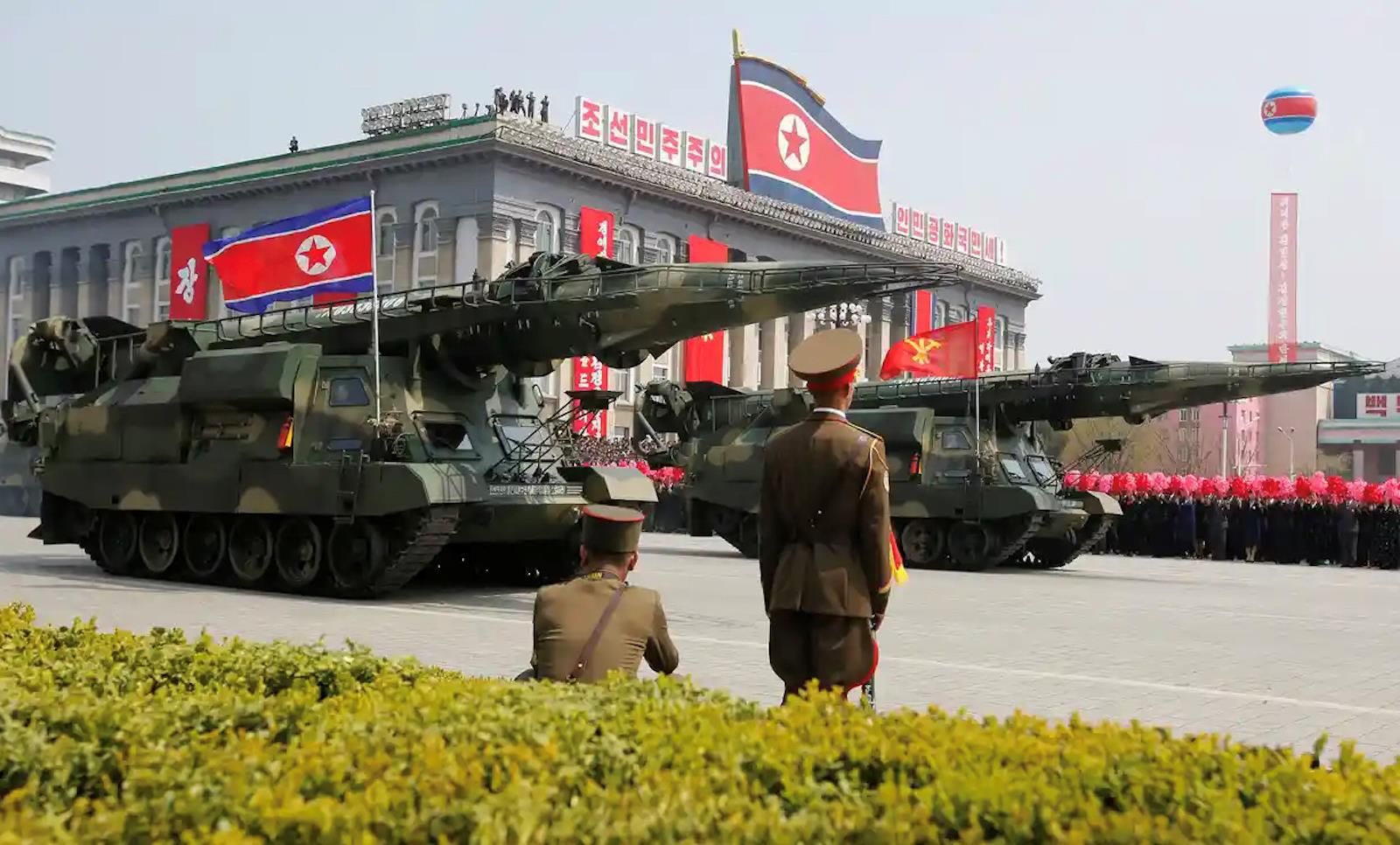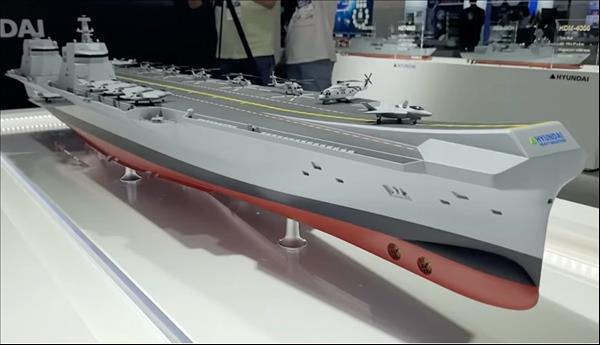(MENAFN- Asia Times) South Korea has just upsized its aircraft carrier ambitions from a 30,000 to a 50,000-ton vessel, a plan critics say makes little economic or strategic sense in sight of adversaries' hypersonic and other carrier-killer missile capabilities.
naval news reported that South Korea's Ministry of Defense (MOD) will begin preliminary policy research on building the CVX carrier following other research that showed the feasibility of developing a naval version of its indigenous KF-21 4.5 generation fighter, known as the KF-21N.
The fighter jet, projected to cost US$1.3 billion per aircraft, would conceivably be launched from the CVX's decks.
Naval News reports that South Korea will likely drop its initial 30,000-ton CVX design with 16 F-35B fighters and instead go for a medium-sized 50,000-ton design while waiting for the KF-21N, which will reportedly take a decade to develop.
The report also mentions that the revised CVX design will feature either a Catapult Assisted Take-Off But Arrested Recovery (CATOBAR) or Short Take-Off But Arrested Recovery (STOBAR) system.
These design changes, Naval News notes, will push up the CVX's projected price tag of US$1.2 billion, with a maintenance cost of US$45 million a year, although critics have already suggested the maintenance figure seems implausibly low.
The MOD will review various factors in its preliminary policy research, according to Naval News, with a final decision expected to be made by the end of fiscal year 2023 on whether to upscale its future aircraft carrier to a medium-sized one or keep the previous design.
While CVX's main contractor, Hyundai Heavy Industries (HHI), is reportedly optimistic about commissioning the CVX and KF-21N this year with a minimal cost increase, it has never before built carriers or carrier-borne aircraft.

South Korea's first prototype of its 4.5-generation fighter, officially dubbed KF-21 Boramae, revealed at the Korea Aerospace Industries Co. facility in Sacheon, South Korea. Image: Screengrab / CNN
In 2021, HHI signed a memorandum of understanding with top British defense contractor Babcock International to work together to design and build the new CVX, South Korea's light aircraft carrier.
Babcock designed and built the Queen Elizabeth-class carriers for the UK and has its operation in Busan, South Korea's southern harbor city. The company assembles equipment for South Korea's naval programs, according to a company statement reported by CNN.
The CNN report said Hyundai's concept design of the ship, first revealed at an exposition in the summer of 2021, had“an uncanny resemblance to the UK's HMS Queen Elizabeth.”
Should South Korea successfully produce such a carrier, it would join an elite club of Asian countries operating the sophisticated warship.
They include China with its improved ex-Soviet Varyag carriers and indigenously-built models, Japan and its Hyuga and Izumo helicopter carriers, India's Vikrant and Vikramaditya carriers, Thailand's sole Chakri Naruebet carrier and Australia's Canberra-class landing helicopter docks.
Despite the ambition, it is still unclear what role aircraft carriers will play in South Korea's broad military strategy. The CVX could conceivably provide South Korea with a survivable platform for command and control and retaliation strikes against North Korea, as South Korea's major military bases and airfields are within range of North Korea's missile arsenal.
The CVX would also allow South Korea to play a potentially larger role in Indo-Pacific alliances, especially during a contingency in Taiwan or the South China Sea, albeit likely playing an indirect role.
In an October 2022 article for the Washington Quarterly, Oriana Maestro and Sungmin Cho note that South Korea's CVX program will strengthen its deterrence and defenses against North Korea, which would free up US forces to focus on Taiwan or the South China Sea in a conflict scenario.
At the same time, aircraft carriers are also potent diplomatic tools. Their high visibility and imposing looks make them ideal messaging platforms for the threat of force against adversaries and reassurance for allies and partners.
However, South Korea's carrier ambitions may be obsolete in the hypersonic age, signifying that prestige, more than military rationale, could be driving the country's carrier program.
asia times reported last month that the advent of hypersonic weapons and stealthy conventional submarines may have made aircraft carriers too vulnerable to use in combat roles, with these multi-billion vessels ending up in limited roles that do not justify their costs.

North Korea has claimed to develop 'carrier-killer' hypersonic missiles. Image: 38North / Twitter
Not to be outdone in developing hypersonic weapons, 38north reported in may 2017 that North Korea may have developed a carrier-killer missile, dubbed the KN-17. The source notes that the KN-17 is a Scud variant fitted with small fins on the reentry vehicle, presumably for terminal-stage steering.
However, 38North notes that the KN-17 may have minimal targeting capabilities, due to a lack of a reliable missile guidance system that can survive reentry and hypersonic flight, and that the missile has failed multiple times during tests.
Still, the source mentions that North Korea usually gets its missiles working after some development time and that it chose the Scud as the base for its carrier-killer missile due to its tried-and-tested reliability.
But North Korea is known for peddling in disinformation that exaggerates its military capabilities, meaning its carrier-killer missile claims should be treated skeptically. However, North Korea's conventional submarine fleet may be a more credible threat than its claimed carrier-killer missiles.
nuclear threat initiative notes, as of october 2022 , North Korea maintained one of the world's largest submarine fleets, with anywhere between 64 to 86 boats. However, the report also mentions that it is doubtful if all of North Korea's submarines are operational, given their age and the country's very limited resources.
Nevertheless, the national interest reported in march 2021 that in 2015 North Korea had practiced sinking a US carrier using fighter aircraft to penetrate the ship's anti-aircraft defenses and conduct-close range attacks with combined submarine units making torpedo attacks against the target after it had been crippled by air attack.
That drill may be on the mark considering the vulnerability of US carriers to stealthy submarines, which was shown in a well-known 2005 naval exercise wherein a Swedish Gotland-class submarine“sank” the USS Ronald Reagan. Similarly, in 2015, a French Rubis nuclear-powered submarine“sank” the USS Theodore Roosevelt along with several of its escort ships in another exercise.
North Korea has also set a precedent for sinking South Korean warships using submarines, with the 2010 sinking of the ROKNS Cheonan.
While those threats may still be hypothetical, they nonetheless will push South Korea's CVX into limited roles that likely do not justify its high price tag. Given that, critics of South Korea's carrier program charge that the project is driven more by techno-nationalism to upstage Japan while showcasing to the world its shipbuilding prowess.






















Comments
No comment